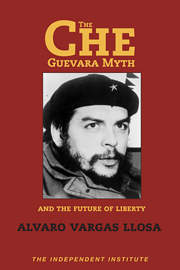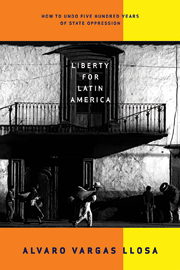The latest U.S. figures indicate there has been a big increase in coca cultivation in Peru over the past year and a smaller but noticeable spike in Bolivia. Even more significantly, the coca estimates for Colombia, which will be published later, are also up after three years of what looked like a successful eradication effort. Actually, this has been the pattern for the last thirty years: every time it looks like eradication is working cultivation goes back up again. Is anyone in any position of responsibility in the U.S. even considering the possibility of a totally new approach?
I hasten to add that there are signs that some officials at the State Department understand the need to deemphasize the drug issue to Latin American countries. There are even signs that Washington may be amenable to some compromise with Andean countries like Bolivia that want to increase the number of hectares of coca allowed for legal uses.
This reasonable attitude might avoid immediate diplomatic problems and help diffuse the tension that is brewing in the Andes with the rise of political caudillos critical of the U.S. who are allying themselves with coca growers. But the problem is with the policy itself. The drug war is not working and will never work unless totalitarian regimes are installed across much of this hemisphere (and even that would be a long shot—the Soviet prohibition of alcohol in the 1920s, 1958, 1972, and 1979 failed miserably!)
Between 2001 and 2004, a colossal effort was made to reduce coca plantations in Colombia. The idea was to kill two birds with one stone. On the one hand, Colombia accounts for some $65 billion worth of cocaine that flows into the U.S. and, on the other, Columbia faces a terrorist insurgency that feeds on drug money. About half of the $6 billion that have been poured into Latin America by the U.S. to combat drugs in the past six years has gone to Colombia. Through a combination of various forms of eradication, including aerial spraying, Colombia was able to reduce by more than one third the total area of coca plantations during that three-year period. But the effect was also an increase in coca plantations in Peru and Bolivia. And now it looks as if Colombia coca cultivation is picking up again as well.
The UN estimates that most coca plantations spotted last year in Colombia were new and, according to a recent issue of The Economist, American officials are saying that the replanting rate rematches the eradication rate nowadays. I recently heard the same estimate from a former Justice minister in Colombia who has never been accused of being remotely lenient toward narco-traffickers. In any case, coca fields still extend over a total area of more than 100,000 hectares. Coca growers are simply moving the shrubs from areas where they are vulnerable to aerial spraying to places where that type of eradication is forbidden. They are decentralizing their plots to avoid heavy concentration in certain areas. School kids’ stuff, really.
A few weeks ago, the Government Accountability Office, a research arm of the U.S. Congress, put out a report stating that the amount of cocaine available in the U.S. has not been reduced. They think the price may have gone up because of an increase in law-enforcement action in this country but the number of users, some two million, has stayed the same and the flow of cocaine continues to be strong. Since 1980, the price of cocaine in the U.S. has decreased by 50 % while the drug war in South America has continued.
Many people in South America understand this reality better than U.S. officials do. They understand that many decades of collectivist land reforms in the Andes have destroyed agriculture and that, in the absence of good alternative crops, the increased value of coca, artificially raised by the drug war, is irresistible. However, the more reasonable Andean political leaders are either unwilling to make that case forcefully because of fear of U.S. reprisals or prefer to wait until a serious debate begins to change the focus of official U.S. policy (there is little a Latin American country can do by itself).
Any Latin American country that chooses to unilaterally relax coca eradication and cease to cooperate with the U.S. drug war would face such dire consequences that it makes little sense for a poor country to focus its political energy on defying U.S. policy—unless you are a U.S.-bashing demagogue allied with coca growers and want to score domestic points. One way or the other, the result is the perpetuation of a colossal mistake.
Year after year masses of statistics refute the official boasts about progress on the drug war. How much more money needs to be wasted, how many more Latin Americans alienated, and how many more U.S.-bashing demagogues created before the most powerful nation in the history of human civilization realizes that, yes, perhaps there is a better solution than trying to terminate those stubborn little shrubs?












